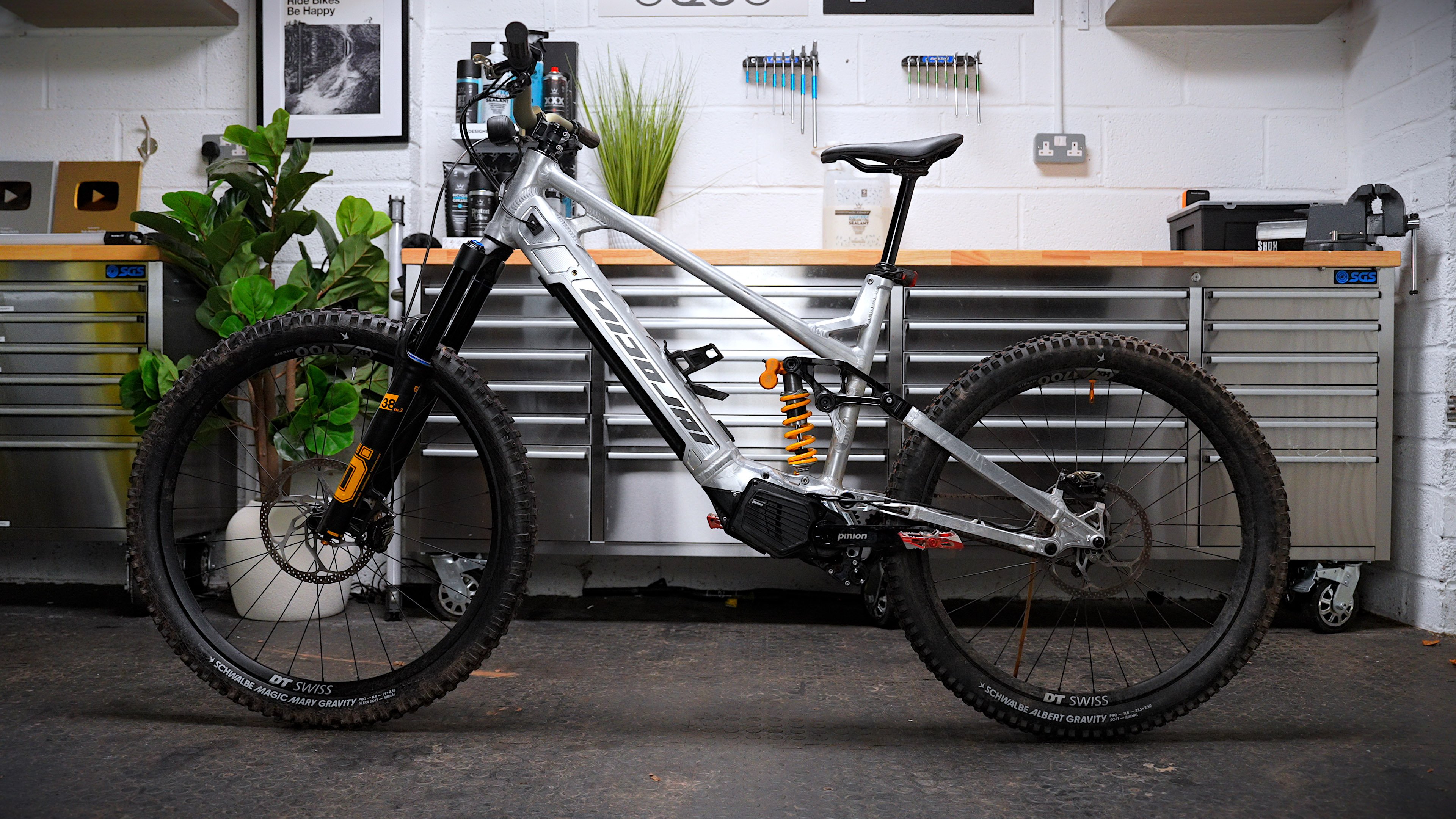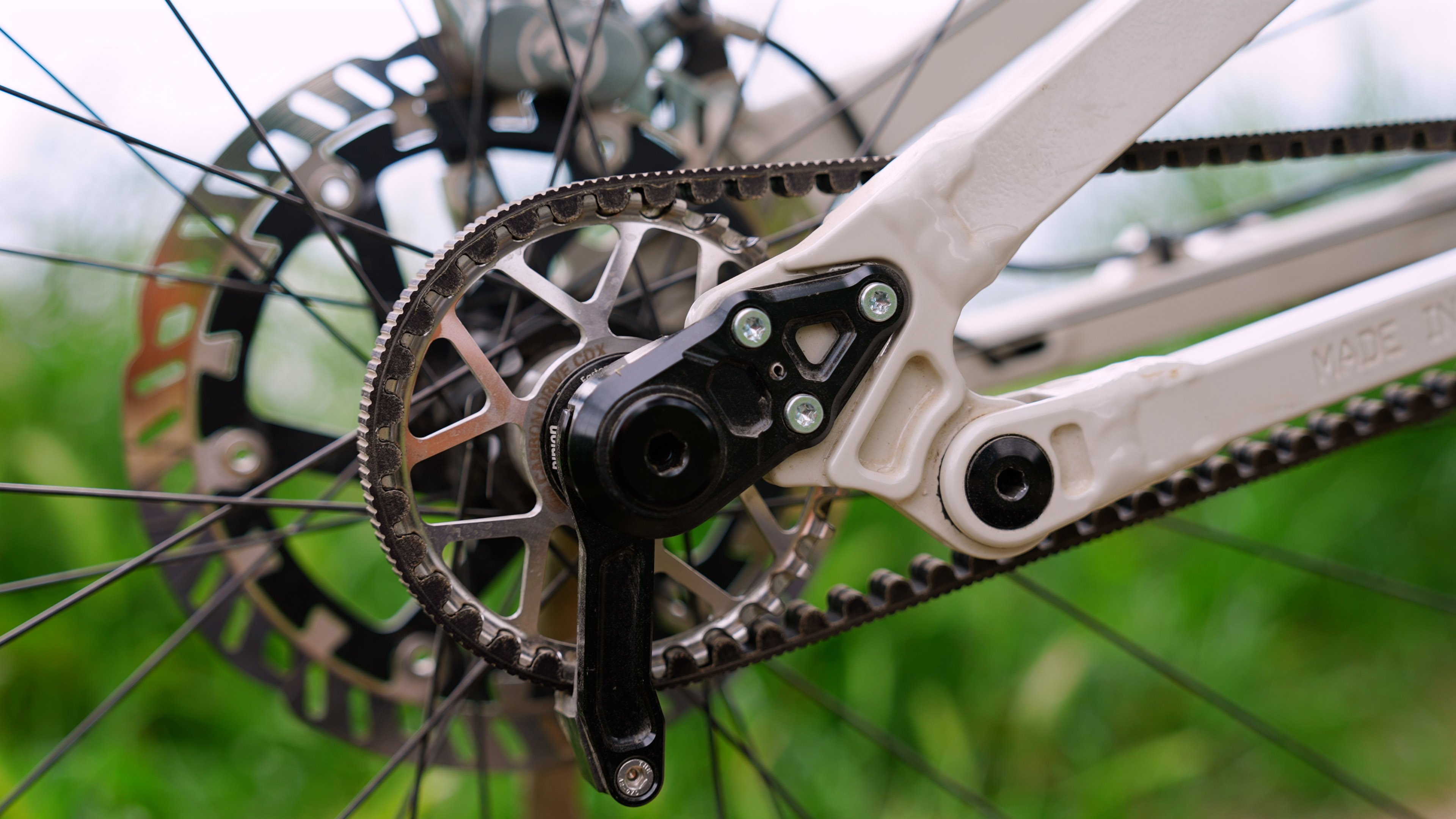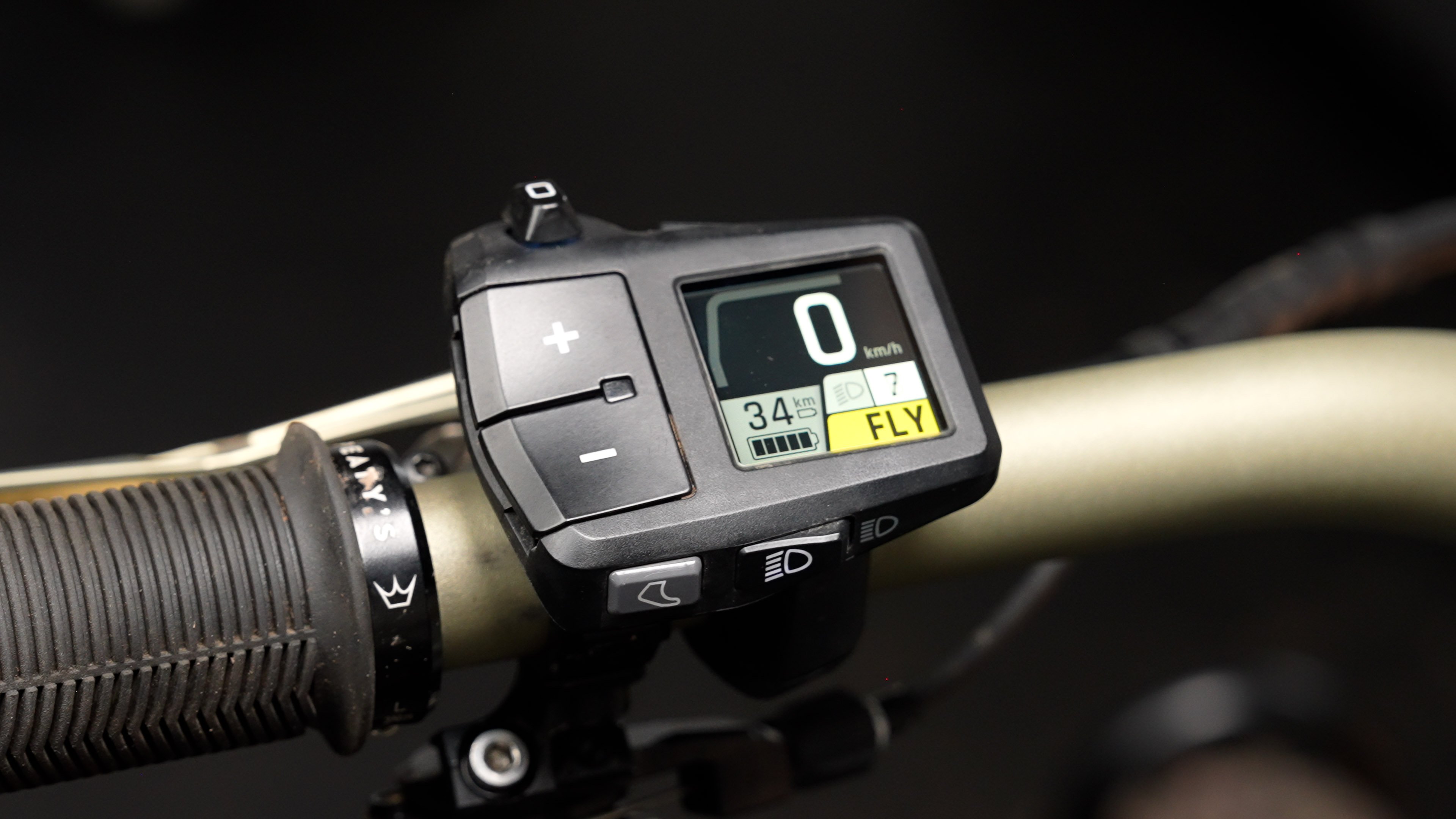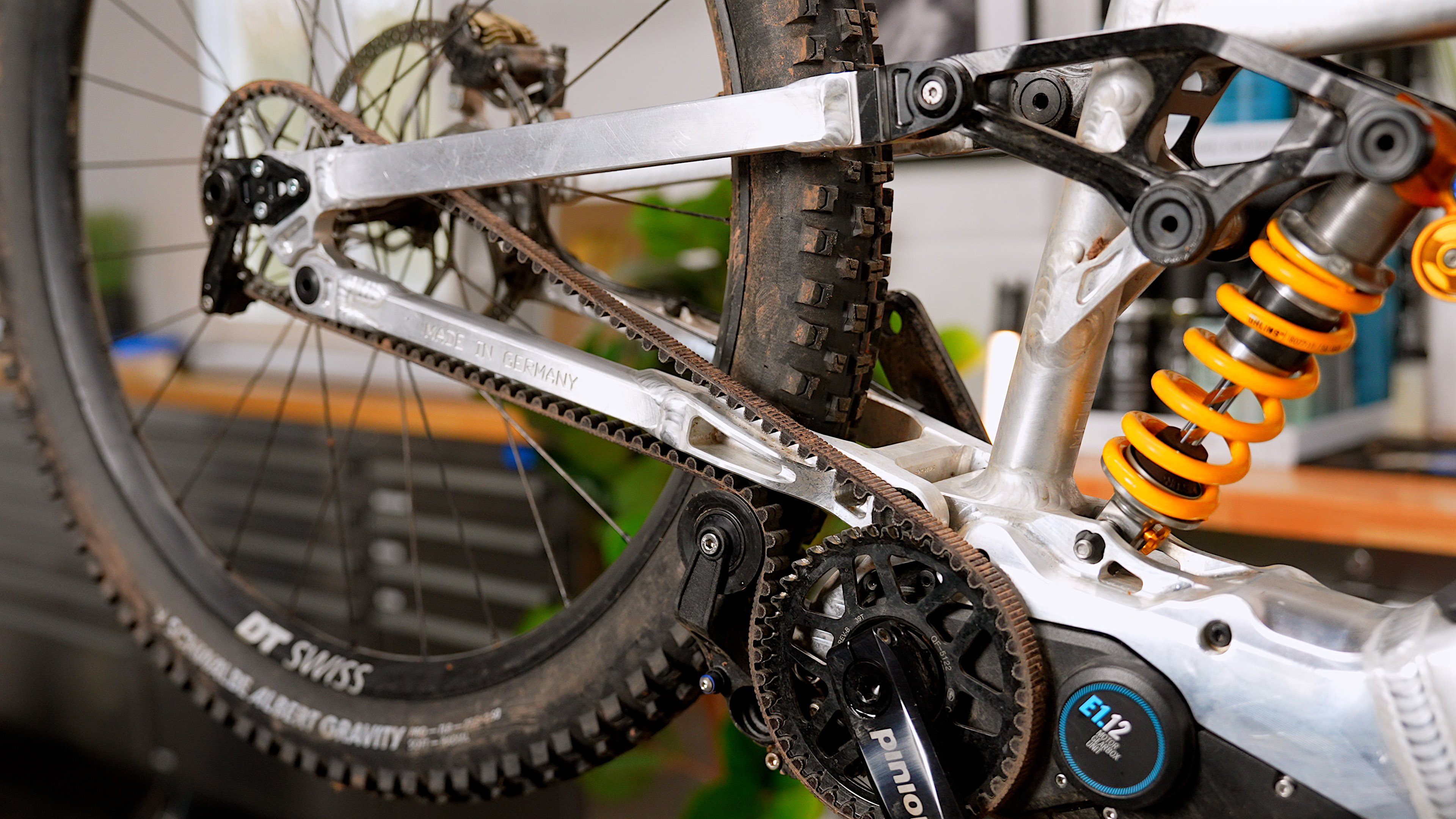- Intended Use
- Enduro
- Motor
- Pinion MGU
- Battery
- 720WH or 960Wh
- Fork Travel
- 170mm
- Rear Travel
- 166mm
- Weight
- 26.44KG
Introduction
The Nicolai S16 is a long-travel enduro eMTB that combines modern suspension design with one of the most talked-about drive systems currently on the market: the Pinion Motor Gearbox Unit (MGU). Instead of relying on a conventional derailleur, chain, and cassette, this setup uses a Gates carbon belt drive and a sealed gearbox integrated with the motor.
Gone are the days of constant derailleur adjustments, chain lubrication, and anxious glances at your rear mech every time you roll through a rock garden. I built this bike last year and have ridden it through a harsh British winter—plenty of mud, wet roots, and foul weather. If you’ve been wondering how the Pinion MGU performs and whether it can truly replace a traditional drivetrain, read on to find out how it all comes together.
The Pinion MGU: Motor Meets Gearbox
Pinion’s combined motor and gearbox unit places both shifting and torque production in a single package at the center of the bike, eliminating exposed drivetrain components at the rear wheel. In terms of torque, it offers a nominal 85 Nm, although gears one through four deliver up to 160 Nm for slow, technical climbs. This can feel like rock-crawling on an eMTB, especially with the super-low first gear ratio. Shifting is entirely electronic, using what Pinion calls “Smart.Shift.” It’s quick—noticeably faster than many other electronic drivetrains.
You can shift under load and even while at a standstill, which is a godsend when you have to start suddenly on a steep incline. That said, there’s a characteristic “double shift” clunk transitioning between gears four and five, and again between eight and nine. It doesn’t affect actual performance, but you do feel it when pedaling hard. Pinion also includes an auto-shift mode that reacts to immediate riding conditions, but I found it less intuitive than simply managing shifts myself. Because auto-shift can’t predict the terrain ahead, it tends to shuffle gears at awkward moments. The good news is it’s easy to toggle off and on by holding a button on the bar controller for a few seconds—no need to connect to an app or fuss with deeper settings.
Riding Impressions: Power and Pedal Float
On the trail, the motor’s overall power feels comparable to an 85 Nm Bosch system in mid-range gears, though those lower gears really shine if you want raw climbing grunt. The trade-off is noise. Gears one through four are noticeably louder, but if you spend most of your time in gear five or above, the motor hum quiets down considerably.

One interesting quirk is that the motor requires a bit of crank rotation—about 10 degrees—before it fully engages. It’s hardly a dealbreaker, but it can take some getting used to on especially steep starts. The cranks also have a small amount of free float, somewhat reminiscent of using an “O-Chain” system. This has its advantages in rough terrain by minimizing pedal kickback when the rear suspension compresses.
Building and Owning the Nicolai S16
Nicolai’s frames are famously robust, and the S16 is no exception. Built from 7020 aluminum with substantial welds, the bike exudes a tank-like presence—think of it as the G-Wagon of eMTBs. My particular frame sports a raw aluminum finish, making scratches easy to buff out rather than requiring paint touch-ups. It looks burly, and if anything, the aesthetic only reinforces how long this frame is likely to last.
The suspension layout allows for 166 mm of rear travel, paired with a 170 mm fork (rated up to 180 mm). The Horst Link design is impressively plush in the early stroke, ramps up nicely at the end, and responds brilliantly to small bumps—especially when paired with a coil shock. Even though my build weighs in around 26 kg (thanks to downhill-rated tires, alloy components, and the heft of the motor-gearbox unit), the bike feels surprisingly nimble.
Because most of that mass sits low and centrally, the S16 stays planted through corners and in chunky descents without feeling unwieldy. Where some eMTBs opt for short chainstays to feel playful, Nicolai balances the longer front center with 455 mm chainstays. At a size Large, the reach is 520 mm, which suits my riding style; taller riders will appreciate that Nicolai offers larger frames as well.
Range and Battery Performance
My S16 uses the 720 Wh battery option, though its actual capacity is closer to around 680 Wh, judging by the label. There’s also a 960 Wh battery available for those wanting more range. While Pinion’s gearbox adds mechanical complexity, in practice you just don’t notice it mechanically, aside from a slight penalty in efficiency.
Compared to a 750 Wh Bosch system, my winter rides suggest around 10–15% less range, but real-world comparisons can be tricky due to temperature, mud, and elevation changes. One small complaint is that battery removal requires a keyed lock. I tend to lose track of keys, and I wish Nicolai had opted for a simple hex-bolt release instead, as some other brands have.
Maintenance and Reliability
Living with a belt drive and gearbox is refreshingly simple. After a muddy ride, I just rinse the belt with water and put the bike away. There’s no derailleur alignment to fuss over, and the gearbox is sealed, so grit and water can’t cause the usual chain-and-cassette wear. Pinion recommends an oil change at 10,000 km, and that’s a quick procedure. The bike also came through 400 km of soggy UK winter in flawless form. Sure, 400 km might not qualify as a multi-year torture test, but it’s more than enough for any issues to show up if they’re going to. So far, it has been rock-solid.

Life on a Gearbox: Pros and Cons
Riding a gearbox eMTB does mean carrying a bit more weight, and in gears one through four, the Pinion unit can be loud. Yet the list of benefits is compelling. Shifts are fast and trouble-free, there’s no derailleur to knock out of alignment, and there’s a lower risk of mechanical failure overall. You also get a near-silent ride in higher gears, a clean belt drive, and a vastly simplified maintenance routine.
In other words, the gearbox approach might just be the future of eMTB drivetrains—especially if weight and noise can be further reduced in next-generation units. The Nicolai S16 is already a tangible glimpse of that future, pairing bulletproof construction with the new-school approach to eMTB power delivery.
Final Thoughts
After living with this bike through a British winter, I have no hesitation recommending the Nicolai S16 MGU to anyone seeking an ultra-durable, low-maintenance enduro machine. It’s not light and nimble like some lighter weight options, and the noise in the lower gears is noticeable, but these trade-offs are easily overshadowed by the freedom from chain maintenance, the seamless shifting, and the rock-solid frame.
If you want a high-performance eMTB that shrugs off challenging conditions and doesn’t require you to constantly tweak a derailleur, the Nicolai S16 with the Pinion MGU should be on your radar. It’s the kind of bike that could easily last for years, and it proves that a well-designed gearbox system can elevate the eMTB experience in a real, meaningful way.
The Nicolai S16 is a long-travel enduro eMTB that combines modern suspension design with one of the most talked-about drive systems currently on the market: the Pinion Motor Gearbox Unit (MGU). Instead of relying on a conventional derailleur, chain, and cassette, this setup uses a Gates carbon belt drive and a sealed gearbox integrated with the motor.
Gone are the days of constant derailleur adjustments, chain lubrication, and anxious glances at your rear mech every time you roll through a rock garden. I built this bike last year and have ridden it through a harsh British winter—plenty of mud, wet roots, and foul weather. If you’ve been wondering how the Pinion MGU performs and whether it can truly replace a traditional drivetrain, read on to find out how it all comes together.
The Pinion MGU: Motor Meets Gearbox
Pinion’s combined motor and gearbox unit places both shifting and torque production in a single package at the center of the bike, eliminating exposed drivetrain components at the rear wheel. In terms of torque, it offers a nominal 85 Nm, although gears one through four deliver up to 160 Nm for slow, technical climbs. This can feel like rock-crawling on an eMTB, especially with the super-low first gear ratio. Shifting is entirely electronic, using what Pinion calls “Smart.Shift.” It’s quick—noticeably faster than many other electronic drivetrains.
You can shift under load and even while at a standstill, which is a godsend when you have to start suddenly on a steep incline. That said, there’s a characteristic “double shift” clunk transitioning between gears four and five, and again between eight and nine. It doesn’t affect actual performance, but you do feel it when pedaling hard. Pinion also includes an auto-shift mode that reacts to immediate riding conditions, but I found it less intuitive than simply managing shifts myself. Because auto-shift can’t predict the terrain ahead, it tends to shuffle gears at awkward moments. The good news is it’s easy to toggle off and on by holding a button on the bar controller for a few seconds—no need to connect to an app or fuss with deeper settings.
Riding Impressions: Power and Pedal Float
On the trail, the motor’s overall power feels comparable to an 85 Nm Bosch system in mid-range gears, though those lower gears really shine if you want raw climbing grunt. The trade-off is noise. Gears one through four are noticeably louder, but if you spend most of your time in gear five or above, the motor hum quiets down considerably.
One interesting quirk is that the motor requires a bit of crank rotation—about 10 degrees—before it fully engages. It’s hardly a dealbreaker, but it can take some getting used to on especially steep starts. The cranks also have a small amount of free float, somewhat reminiscent of using an “O-Chain” system. This has its advantages in rough terrain by minimizing pedal kickback when the rear suspension compresses.
Building and Owning the Nicolai S16
Nicolai’s frames are famously robust, and the S16 is no exception. Built from 7020 aluminum with substantial welds, the bike exudes a tank-like presence—think of it as the G-Wagon of eMTBs. My particular frame sports a raw aluminum finish, making scratches easy to buff out rather than requiring paint touch-ups. It looks burly, and if anything, the aesthetic only reinforces how long this frame is likely to last.
The suspension layout allows for 166 mm of rear travel, paired with a 170 mm fork (rated up to 180 mm). The Horst Link design is impressively plush in the early stroke, ramps up nicely at the end, and responds brilliantly to small bumps—especially when paired with a coil shock. Even though my build weighs in around 26 kg (thanks to downhill-rated tires, alloy components, and the heft of the motor-gearbox unit), the bike feels surprisingly nimble.
Because most of that mass sits low and centrally, the S16 stays planted through corners and in chunky descents without feeling unwieldy. Where some eMTBs opt for short chainstays to feel playful, Nicolai balances the longer front center with 455 mm chainstays. At a size Large, the reach is 520 mm, which suits my riding style; taller riders will appreciate that Nicolai offers larger frames as well.
Range and Battery Performance
My S16 uses the 720 Wh battery option, though its actual capacity is closer to around 680 Wh, judging by the label. There’s also a 960 Wh battery available for those wanting more range. While Pinion’s gearbox adds mechanical complexity, in practice you just don’t notice it mechanically, aside from a slight penalty in efficiency.
Compared to a 750 Wh Bosch system, my winter rides suggest around 10–15% less range, but real-world comparisons can be tricky due to temperature, mud, and elevation changes. One small complaint is that battery removal requires a keyed lock. I tend to lose track of keys, and I wish Nicolai had opted for a simple hex-bolt release instead, as some other brands have.
Maintenance and Reliability
Living with a belt drive and gearbox is refreshingly simple. After a muddy ride, I just rinse the belt with water and put the bike away. There’s no derailleur alignment to fuss over, and the gearbox is sealed, so grit and water can’t cause the usual chain-and-cassette wear. Pinion recommends an oil change at 10,000 km, and that’s a quick procedure. The bike also came through 400 km of soggy UK winter in flawless form. Sure, 400 km might not qualify as a multi-year torture test, but it’s more than enough for any issues to show up if they’re going to. So far, it has been rock-solid.
Life on a Gearbox: Pros and Cons
Riding a gearbox eMTB does mean carrying a bit more weight, and in gears one through four, the Pinion unit can be loud. Yet the list of benefits is compelling. Shifts are fast and trouble-free, there’s no derailleur to knock out of alignment, and there’s a lower risk of mechanical failure overall. You also get a near-silent ride in higher gears, a clean belt drive, and a vastly simplified maintenance routine.
In other words, the gearbox approach might just be the future of eMTB drivetrains—especially if weight and noise can be further reduced in next-generation units. The Nicolai S16 is already a tangible glimpse of that future, pairing bulletproof construction with the new-school approach to eMTB power delivery.
Final Thoughts
After living with this bike through a British winter, I have no hesitation recommending the Nicolai S16 MGU to anyone seeking an ultra-durable, low-maintenance enduro machine. It’s not light and nimble like some lighter weight options, and the noise in the lower gears is noticeable, but these trade-offs are easily overshadowed by the freedom from chain maintenance, the seamless shifting, and the rock-solid frame.
If you want a high-performance eMTB that shrugs off challenging conditions and doesn’t require you to constantly tweak a derailleur, the Nicolai S16 with the Pinion MGU should be on your radar. It’s the kind of bike that could easily last for years, and it proves that a well-designed gearbox system can elevate the eMTB experience in a real, meaningful way.









